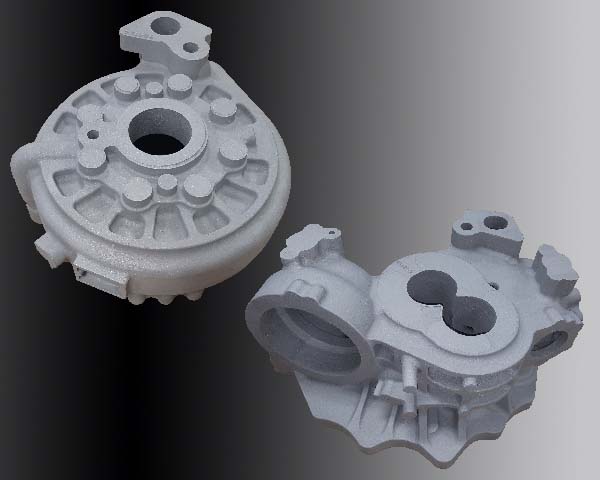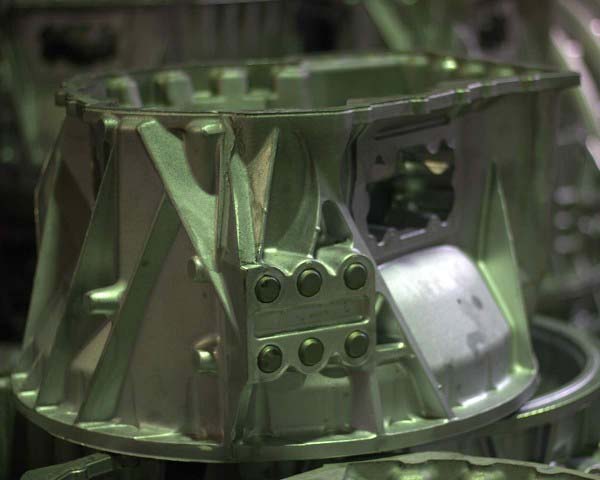Aluminum Casting Explained: Secret Realities and Insights for Market Professionals
Aluminum casting acts as an essential process in modern-day production, forming parts throughout different industries. Its diverse approaches, such as sand and die casting, accommodate different production demands. The unique buildings of aluminum alloys boost their applicability, yet challenges continue to be in preserving quality and effectiveness. Recognizing these elements is important for industry professionals. What are the most up to date improvements and best practices that can better optimize this process?
Review of Aluminum Casting Processes

Crucial element of aluminum casting processes consist of the preparation of molds, which may be made from sand, metal, or ceramic materials, depending on the planned usage. Additionally, temperature control is critical to ensure correct melting and solidification of aluminum.
The casting procedure permits complex styles and can attain high degrees of dimensional accuracy. As soon as cooled down, the spreadings may go through ending up procedures such as machining or surface therapy to meet certain efficiency requirements. Overall, aluminum casting works as a versatile manufacturing technique, properly meeting the varied needs of different sectors.
Kinds Of Aluminum Casting Techniques
In the domain of aluminum casting, different methods are employed to attain various results. Sand casting strategies provide flexibility and cost-effectiveness for intricate forms, while die casting procedures use high precision and effectiveness for mass manufacturing. Recognizing these methods is vital for picking the suitable approach based upon job requirements.
Sand Casting Methods
Sand casting techniques stand for an essential method in aluminum casting, where sand is used as a mold and mildew material to form molten metal. This process involves developing a pattern from the desired component, which is then put in a sand blend to form a mold and mildew. The sand is compacted around the pattern, and after removal, it creates a tooth cavity in the form of the component. Molten aluminum is put right into this tooth cavity, permitting it to cool down and solidify. One significant advantage of sand casting is its versatility; it can suit complex forms and large elements. In addition, the products used are reasonably cost-effective, making it an obtainable choice for different production applications in the aluminum industry.
Die Casting Processes
Die casting processes are a famous approach for forming aluminum parts, making use of high-pressure techniques to force liquified steel right into specifically engineered molds. This procedure is particularly favored for its capability to create complex forms with limited tolerances and a smooth finish. There are two key sorts of die casting: hot chamber and cold chamber. Warm chamber die casting is ideal for steels with low melting points, permitting faster production prices. On the other hand, chilly chamber die casting is suitable for higher melting point steels, requiring a different melting furnace. Both techniques improve efficiency and lower product waste, making them vital in automotive, aerospace, and durable goods industries. Comprehending these processes aids specialists choose one of the most appropriate method for their certain applications.
Product Characteristic of Aluminum Alloys

Strength and Durability
Stamina and durability are crucial characteristics of aluminum alloys that make them appropriate for numerous casting applications. These products exhibit a positive strength-to-weight ratio, permitting the production of lightweight yet robust components. When it come to tensile strength, particular aluminum alloys can be crafted to hold up against significant tons without warping. This home is specifically crucial in sectors such as aerospace and auto, where performance and security are paramount. Furthermore, aluminum alloys usually maintain their mechanical properties under diverse temperature problems, making certain constant performance. The inherent ductility of these alloys also enables reliable shaping throughout the casting process, making it simpler to create intricate geometries. In general, the toughness and sturdiness of aluminum alloys add considerably to their extensive use in innovative applications.
Deterioration Resistance Characteristics
While aluminum alloys are prized for their strength and lightweight properties, their rust resistance is an additional vital characteristic that boosts their suitability for numerous applications. Aluminum normally creates a protective oxide layer when subjected to wetness, which assists to avoid further oxidation. This inherent property makes aluminum alloys specifically important in environments prone to corrosion, such as aquatic and industrial setups. In addition, various alloy compositions can affect resistance degrees, with specific alloys particularly crafted to improve this particular. Therapies like anodizing can further enhance deterioration resistance by thickening the oxide layer. Recognizing the rust resistance of aluminum alloys is essential for sector experts when picking products for tasks needing toughness and longevity in tough environments.
Benefits of Aluminum Casting in Production
Aluminum casting deals numerous benefits in production, making it a recommended selection for numerous markets. One considerable benefit is its light-weight nature, which adds to reduced transportation costs and boosted energy efficiency in end items. Aluminum's outstanding thermal and electric conductivity enhances functionality in applications needing warm dissipation or electrical transmission.
The product's capability to be cast into elaborate forms enables layout versatility, lowering the demand for added machining procedures. In addition, aluminum casting exhibits remarkable deterioration resistance, bring about longer item life-spans and lower maintenance expenses.

Usual Applications of Aluminum Castings
The versatility of aluminum casting allows its widespread use across different industries. Usual applications consist of automotive parts, where lightweight and corrosion-resistant parts, such as engine blocks and transmission real estates, enhance vehicle performance. In the aerospace field, aluminum spreadings are used for architectural parts, providing toughness without adding considerable weight.
Furthermore, the electric sector take advantage of aluminum spreadings in making enclosures and warm sinks, where thermal conductivity is vital. The customer goods sector also integrates aluminum spreadings in items like cookware, furniture, and ornamental items, combining aesthetic appeals with capability.
Moreover, the construction industry uses aluminum castings for architectural aspects, window frameworks, and components, which supply sturdiness and design adaptability. Generally, the varied applications of aluminum spreadings underscore their significance in modern production, adding to improvements in efficiency and item design across multiple fields.
Innovations and Technical Advancements
As sectors remain to progress, developments in aluminum casting innovation are transforming production procedures and product capacities. Innovations in 3D printing and additive manufacturing have actually allowed the development of intricate geometries that were previously difficult to accomplish with standard approaches. These modern technologies enable for quick prototyping, decreasing lead times and why not check here prices.
Furthermore, enhancements in mold and mildew style and products have actually boosted the casting process by boosting effectiveness and lowering waste. The combination of smart manufacturing strategies, such as IoT devices and real-time data analytics, permits much better surveillance and optimization of manufacturing specifications, leading to better outcomes.
In addition, advancements in aluminum alloys provide improved strength, corrosion resistance, and light-weight residential properties, dealing with the growing demands in auto and aerospace industries. Jointly, these advancements are not only improving performance but additionally satisfying the strenuous requirements of modern-day engineering applications.
Finest Practices for Quality Assurance in Aluminum Casting
Making sure high-grade outcomes in aluminum casting requires adherence to finest techniques that incorporate numerous phases of the manufacturing procedure. Complete product assessment is crucial to verify the quality of aluminum alloys made use of, as pollutants can greatly affect the last product. Carrying out specific melting and pouring techniques minimizes issues; preserving ideal temperature levels stops oxidation and advertises uniformity.
Furthermore, mold design plays an essential role; utilizing computer-aided design (CAD) can enhance precision and reduce human mistake. Routine tracking of the cooling procedure is vital to avoid bending and shrinkage. In addition, utilizing non-destructive testing techniques, such as ultrasonic or X-ray examinations, assists identify inner imperfections without harming the parts.
Lastly, developing a responses loop with drivers and designers fosters constant enhancement, making certain that high quality control actions evolve together with technical advancements. By adhering to these ideal practices, suppliers can boost the dependability and efficiency of aluminum spreadings.
Frequently Asked Inquiries
What Are the Ecological Impacts of Aluminum Casting?
The environmental effects of aluminum casting consist of significant power intake, greenhouse gas emissions, and possible water pollution from foundry operations. Additionally, bauxite mining for aluminum ore can cause environment destruction and dirt degradation.
How Does Aluminum Casting Compare to Various Other Metal Casting Procedures?
Aluminum casting generally offers benefits in lightweight components and corrosion resistance contrasted to other processes, such as iron or steel casting, which might offer better toughness but cause heavier and less corrosion-resistant products. - aluminum casting
What Prevail Defects in Aluminum Castings and Their Causes?
Common flaws in aluminum spreadings consist of porosity, shrinkage, and inclusions. Causes typically originate from improper pouring strategies, insufficient mold and mildew style, or contamination of the molten metal, influencing the end product's honesty and performance.
What Safety Safety Measures Should Be Taken During Aluminum Casting?
During aluminum casting, important safety precautions consist of using safety gear, guaranteeing correct ventilation, maintaining a clean office, handling molten steel with care, and click for source following established protocols to decrease dangers of burns, breathing threats, and mishaps.
Exactly How Can I Boost the Efficiency of My Aluminum Casting Procedures?
To enhance effectiveness in aluminum casting procedures, one must maximize mold style, simplify material handling, utilize automated processes, carry out normal maintenance on equipment, and buy staff member training to enhance skills and efficiency.
Different methods exist, aluminum casting includes numerous main processes that cater to various applications and demands. Secret components of aluminum casting processes consist of the prep work of mold and mildews, which might be made from sand, metal, or ceramic products, depending on the meant usage. check this site out Sand casting strategies stand for a fundamental technique in aluminum casting, where sand is used as a mold and mildew material to shape liquified steel. As markets proceed to advance, developments in aluminum casting technology are transforming manufacturing procedures and item capacities. Making sure high-grade outcomes in aluminum casting needs adherence to ideal practices that include numerous stages of the manufacturing procedure.